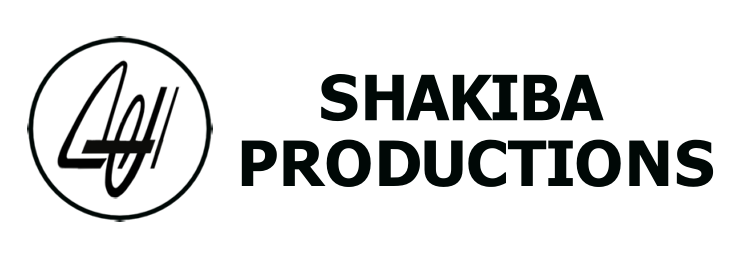BORDER-INDUSTRIAL COMPLEX SERIES OF PAINTINGS
Border-Industrial Complex (BIC) is a series of paintings by Elahe Zivardar depicting the stories and resistance of refugees in the Australian offshore detention center in Nauru. Zivardar began painting while imprisoned in the tiny Pacific Island nation of Nauru by Australian authorities.
Approximately 1200 people seeking asylum, including pregnant women and infants, were detained in Nauru.
The Border-Industrial Complex series portrays real stories from the Nauru detention center. Zivardar uses her skills in architectural representation, her knowledge and unique perspective to present a new form of storytelling through paintings.
Zivardar contributed writing and paintings (including the cover art) to a special issue of the journal Southerly 79.2: Writing Through Fences – Archipelago of Letters. During this process one of the editors Omid Tofighian suggested the series title Border-Industrial Complex.
The series of paintings was exhibited and awarded Honorable Mention at the United Nations International Art Contest for Minority Artists, highlighting intersectionality (November 2023: Geneva, Switzerland).
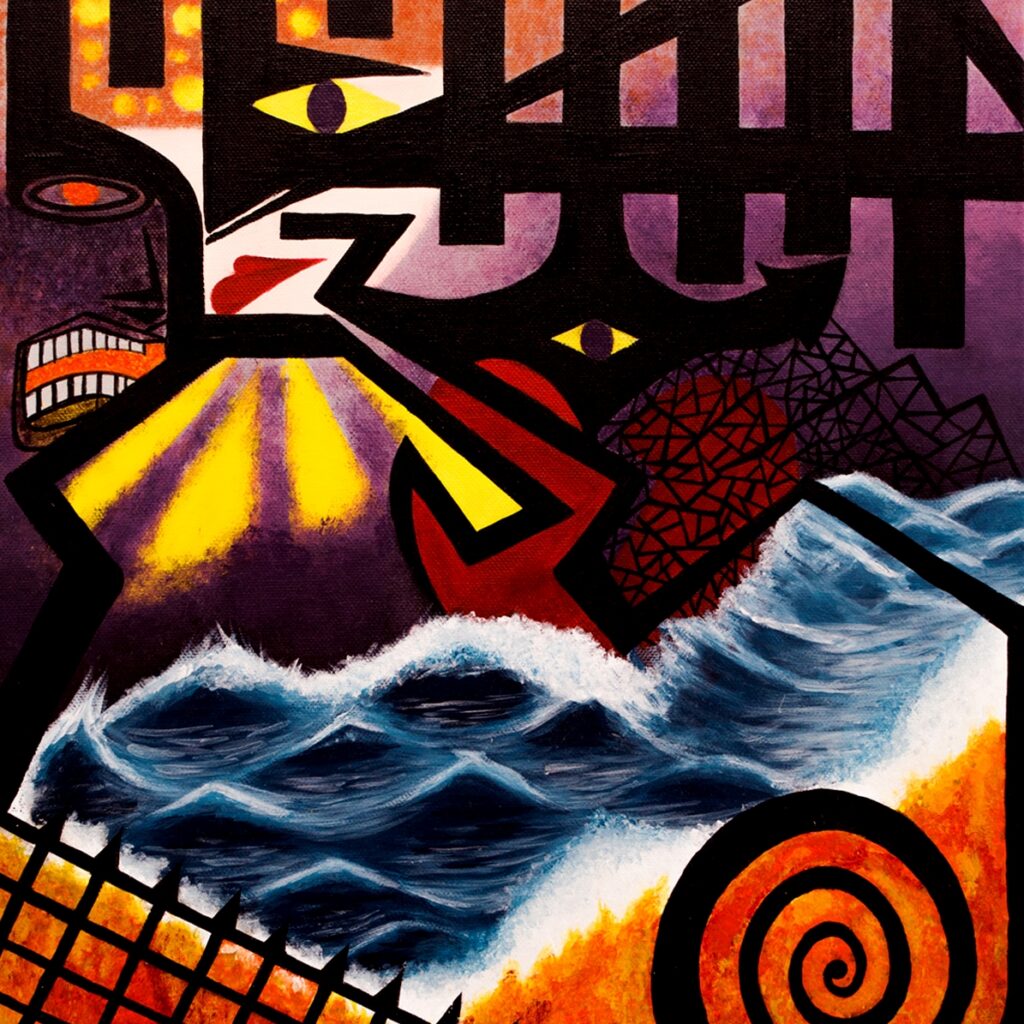
19th of July
Border-Industrial Complex – 01
2017 | Republic of Nauru
Acrylic on Canvas
16 x 20 inches
Artist Statement
I painted 19th July to tell my own story about trying to seek asylum in Australia. Instead of finding safety, I was faced with the 19 July 2013 policy which stripped me of hope and left me in limbo: I was told “You will never make Australia home.”
In this painting the only thing depicted in the style of realism is the ocean. Everything that I experienced during my six-year journey was based on lies, but the ocean was real and symbolic. The fences on both sides of the ocean show a woman stuck behind the bars watching the ocean. The sun is reflected in her eyes and in front of her face. The anchor has broken her heart, she has been stopped at an unexpected and unknown location. The hands that reach for the sun – a symbol of warmth and the imagined freedom associated with Australia – are coming out from the ocean. Instead of reaching the sun people are drowning in the ocean.
The fire behind the fences spirals as it gets closer to the woman who is becoming more alone and isolated… until she sets herself on fire. The woman imagines making a fire, while the brightness of the sun represents the hope that still remains; this stops her from making fire. In front of her face is an angry man who created the 19 July policy. His hostile face and his compressed teeth represent how much he hates the woman because she is seeking asylum. The 19th of July is the worst day for the people incarcerated in Nauru.
The artwork has been used as part of many protests and rallies in Australia.
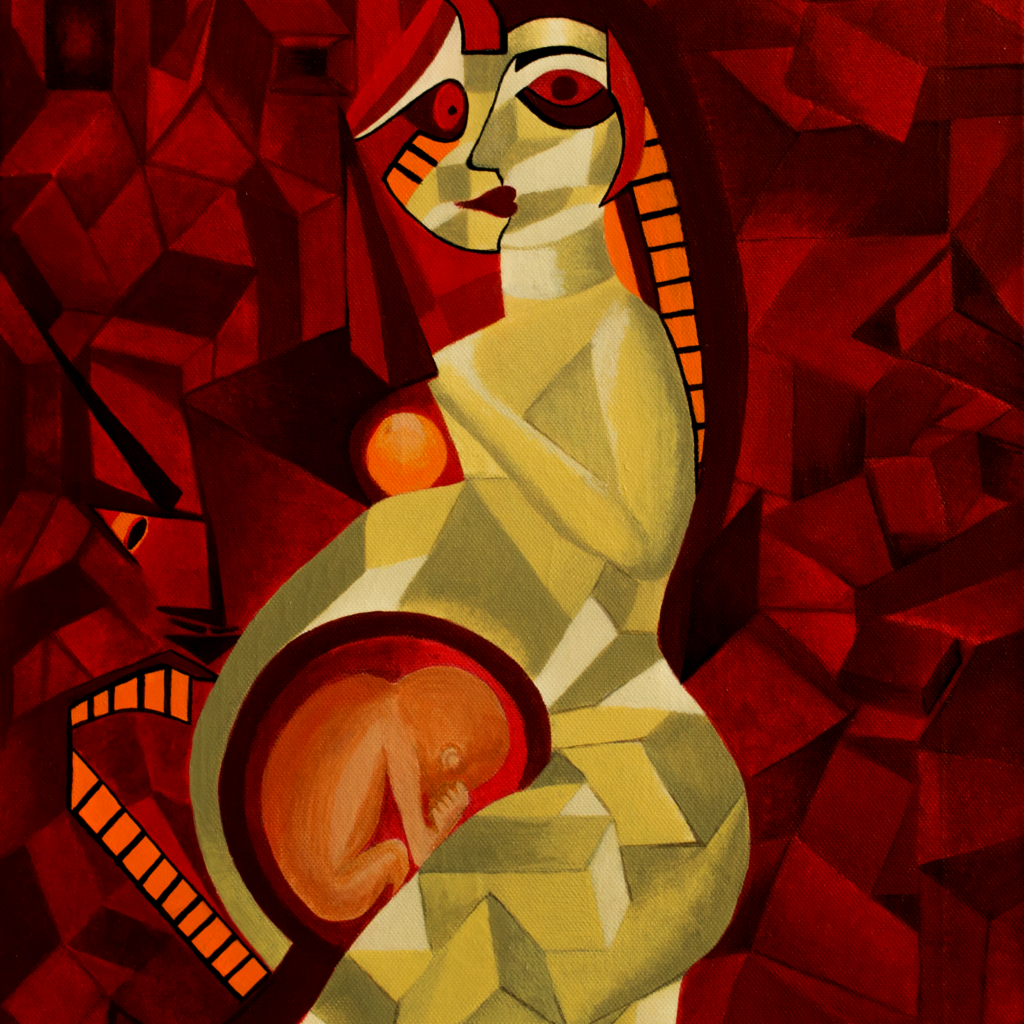
Nameless
Border-Industrial Complex – 02
2017 | Republic of Nauru
Acrylic on Canvas
16 x 20 inches
Artist Statement:
For me, art is a powerful way to express unsaid words; the things we cannot say. My painting Nameless shows the ramifications of a policy designed to break the spirit of innocent women and force them to do things that they would otherwise find unimaginable. Nameless is a depiction of a crime against women, the all-too-common victims of war, which is embedded in the history of Australia.
All the refugees have been detained in Nauru indefinitely. There is no way to leave, to reach freedom. Abortions are illegal in Nauru and the Australian government only permits the transfer of women to Australia for an abortion after five months into a woman’s pregnancy.
It breaks my heart and as I paint, I wonder what the women are forced to do to themselves, and their babies, who will be forever remain “Nameless,” in order to reach freedom. I pause, and wonder if the Australian government is knowingly sacrificing all these babies. The government views them mercilessly as collateral damage to suit their unapologetic strategy of dehumanization. The men and women in power making these decisions are in control of the women’s bodies.
My painting is a culmination of my feelings about this crime. The woman is a broken woman. She is walking toward Australia. The baby inside her is scared, curled up in the fetal position and crying. I feel that the nameless baby does not like this dirty world. A monster’s profile is in front of the womb carrying the baby as though it is going to swallow it. The monster is the Australian government, a symbol I use in many of my paintings. The monster’s teeth extend into the woman’s hair – she has been infected by the monster and her mind has been poisoned. Her actions are the result of this infection. I cannot judge her. I cannot blame her. But l wish she could be given the antidote to the monster’s venomous bite.
I paint red blood to depict the death of the baby who is bleeding into the background of the canvas. Nameless is born. The second trimester of the abortion takes place.
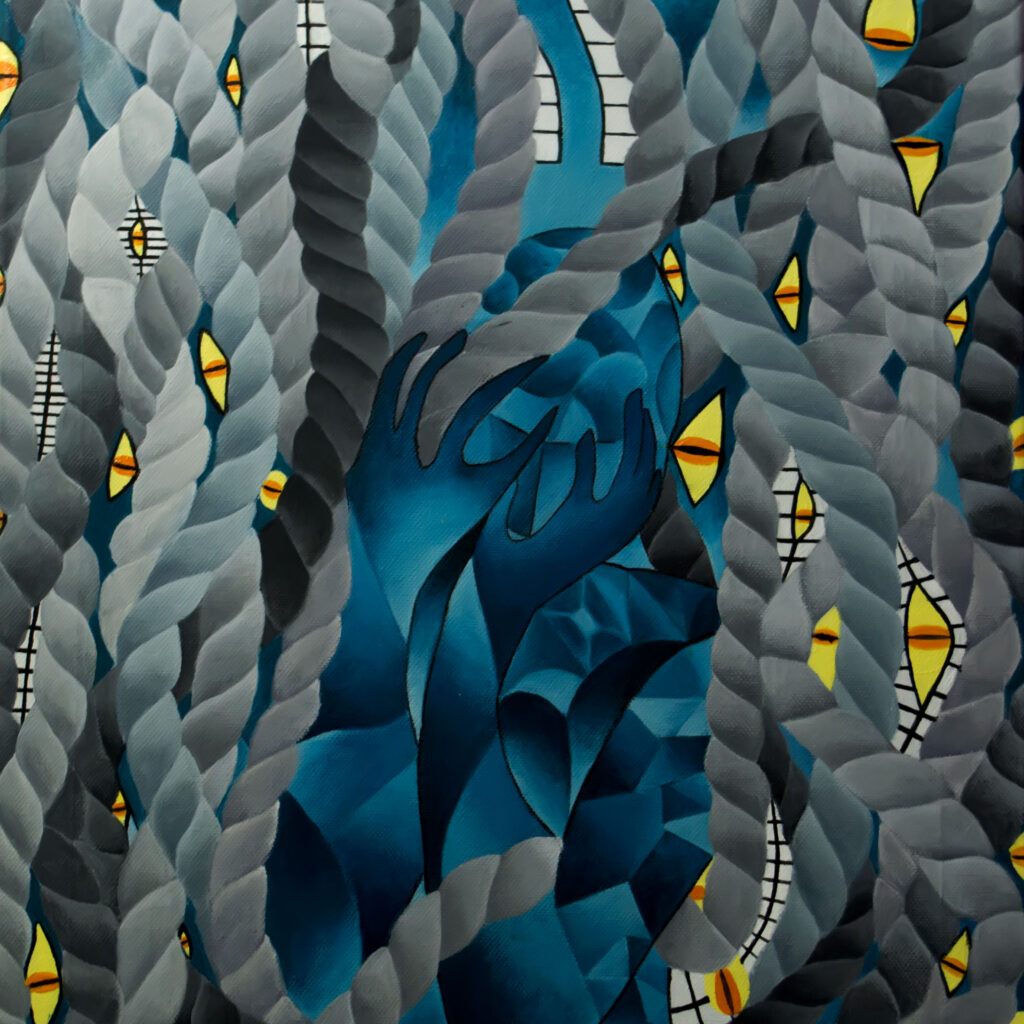
Judgment
Border-Industrial Complex – 03
2018 | Republic of Nauru
Acrylic on Canvas
16 x 20 inches
Artist Statement
I fled Iran in an attempt to save my soul. I ended up being swallowed up by water when my boat, the vehicle I falsely imagined would take me to freedom, threw me into the deep, dark, blue-black ocean. I was seized by the ocean’s monsters. It was too difficult to get out using the ropes from the boat. It was impossible to distinguish the ropes from the deep ocean plants. I became the color of the ocean, no one could tell us apart.
Everything happened in slow-motion, until time stopped. The only thing I could see were the yellow eyes of the ocean’s monsters, sniffing the bubbles from my breath. Their hateful gaze had shiny, sharp teeth that were chewing on my soul. I could hear a message in their eyes asking me “Why did you come to our home?”
Judgement speaks to my feelings about the Australian policy that has cast adrift so many souls in Nauru and Manus.
Rhythm, repetition, ropes, drowning, entanglement, imminent death, piercing yellow eyes blaming me, blaming everyone who was escaping. It captured us in a dreamy, nightmarish atmosphere and devoured us like we were drifting and held imprisoned in the ocean for six years or more.
The Australian government has vicious, sharp white teeth and a wicked grin; it is the root of this evil.
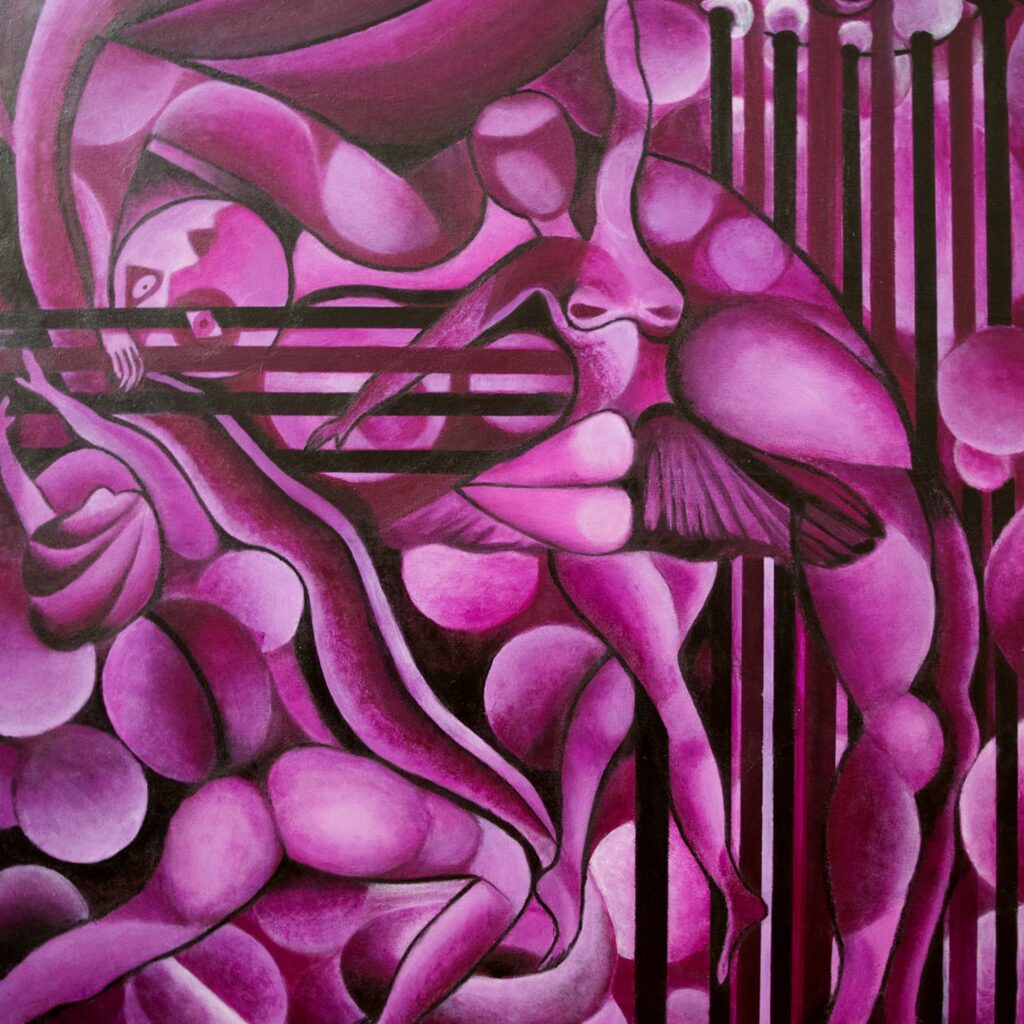
Purple Pain
Border-Industrial Complex – 04
2019 | Republic of Nauru
Acrylic on Canvas
24 x 30 inches
Artist Statement
Purple Pain depicts the strength of refugee women in the face of the , cruelty, discrimination and hate that they suffered at the hands of those whom they had thought would help them: the Australian authorities. They suffered a lot as girls, as women, as wives, as sisters, as mothers, but when they became weak and close to breaking down, they kept moving gracefully, as if dancing. While they appeared to dance, they kept giving birth to love and power, they shared it with everything and everyone. They are goddesses of love and strength.
Purple Pain embodies the situation of women who have fled oppression, including myself, only to be subjected to other forms of oppression against women. It is my hope that we also find other forms of truth and justice.
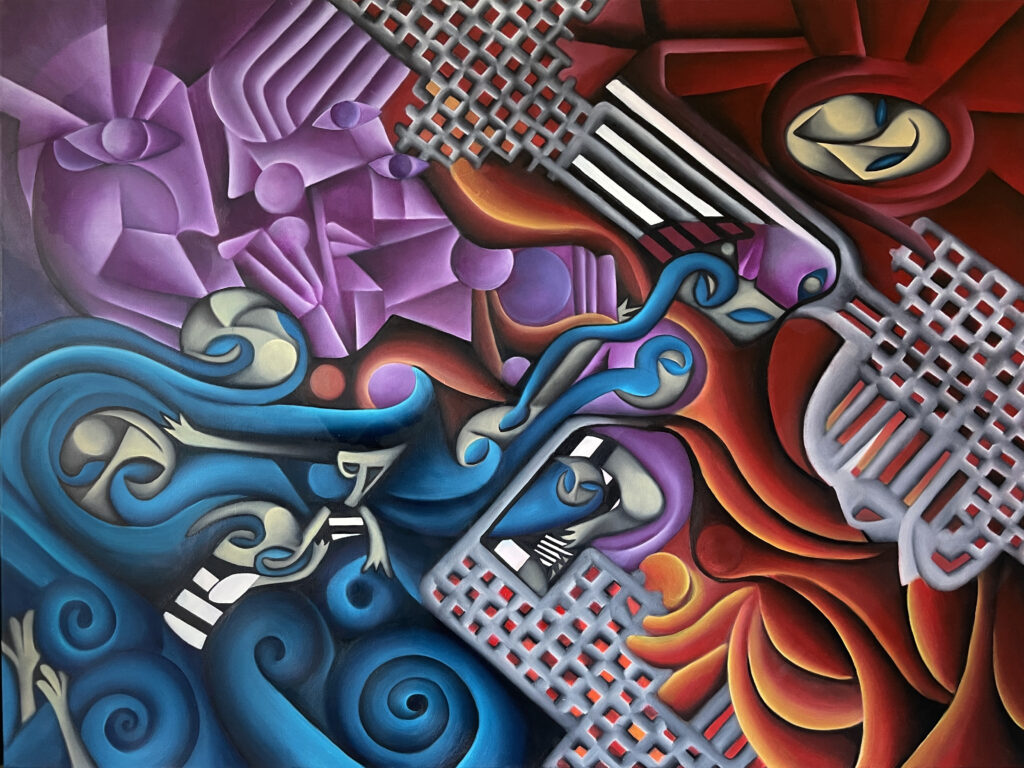
Concealed Borders
Border-Industrial Complex – 05
2020 | USA
Oil on Canvas
36 x 48 inches
Artist Statement
Concealed Borders represents my experience as a journalist and a political prisoner in the Australian offshore detention center in the island-nation, the Republic of Nauru (2013-2019). The painting depicts real stories that I witnessed and heard from the imprisoned children whom I interviewed on the island. It was for a campaign called Kids Off Nauru in November 2019, which helped to end the detention of over 150 refugee children and their families. Some of the children were born there and spent their whole lives in detention. Seeing these desperate children and listening to their heartbreaking words gave me terrible nightmares and deeply influenced my art. Concealed Borders is a visual depiction of my nightmares during that time. Each profile on the canvas is inspired by a real person, and some are influenced by the photos I took.
At the center of the painting a camera has torn the cold, frightening fences of the prison and a little further you see a face within it. The face is an abstract profile of politician Peter Dutton, the emotionless monster, blowing fire on his victims and causing human misery. There is a man on fire, the target of the monster, who symbolizes the many victims who have died in Australian detention centers during these years, by suicide or killed by the authorities.
On the top right there is a little Iraqi girl whom I interviewed. She was 12 years old at the time and had been in an accident with a motorcycle. In front of her face there is a coffin; it is behind the fence and belongs to a young Kurdish Iranian man, Fariborz, a 26-year-old former medical student who died in Nauru in an extremely mysterious way. After his death, his uncle, who is an Australia citizen, was trying to bring his corpse to Australia and organize the funeral. But the Australian government did not allow it and kept his corpse in a coffin at the detention center for almost a month. Everyone, including the children, was able to see the coffin. The purpose was to let them know that even your corpse will not be allowed in visit Australia. This horrifying story had an enormous impact on the refugees, especially the children. Fariborz was there with his mother and little brother and all the smaller children knew him and were friends of his little brother.
During my conversation with the Iraqi girl, she said: “I’m begging my family to go back to Iraq. I know it’s too dangerous and we will die, but at least we will have graves. I do not want to die, and they keep me in a coffin here like Fariborz. He doesn’t have a grave.”
The child’s concern, instead of going to school or having a playground, was not having a grave. This is another reason why all of those children were extremely sick. At the same time, immigration minister Peter Dutton was completely ignoring the doctors who were trying to transfer these children to the Australia mainland. He accused the parents of forcing their kids into hunger strikes in order to go to Australia, and unfortunately the vast majority of the Australian media and journalists supported the government. He had the political power, the media control and whatever else he needed to continue the cruelty and injustice in Nauru and Manus. They created propaganda lauding the Liberal Party’s success in “stopping the boats” of refugees, who were painted as potential terrorists, accused of being a burden on the state and stealing jobs from Australians. They used racism and hate to divide Australians and win election after election, engaging in corruption and further empowering themselves and their powerful friends in the process. The real purpose of the Border-Industrial Complex series of paintings is to unpack and dismantle these elements and strategies.
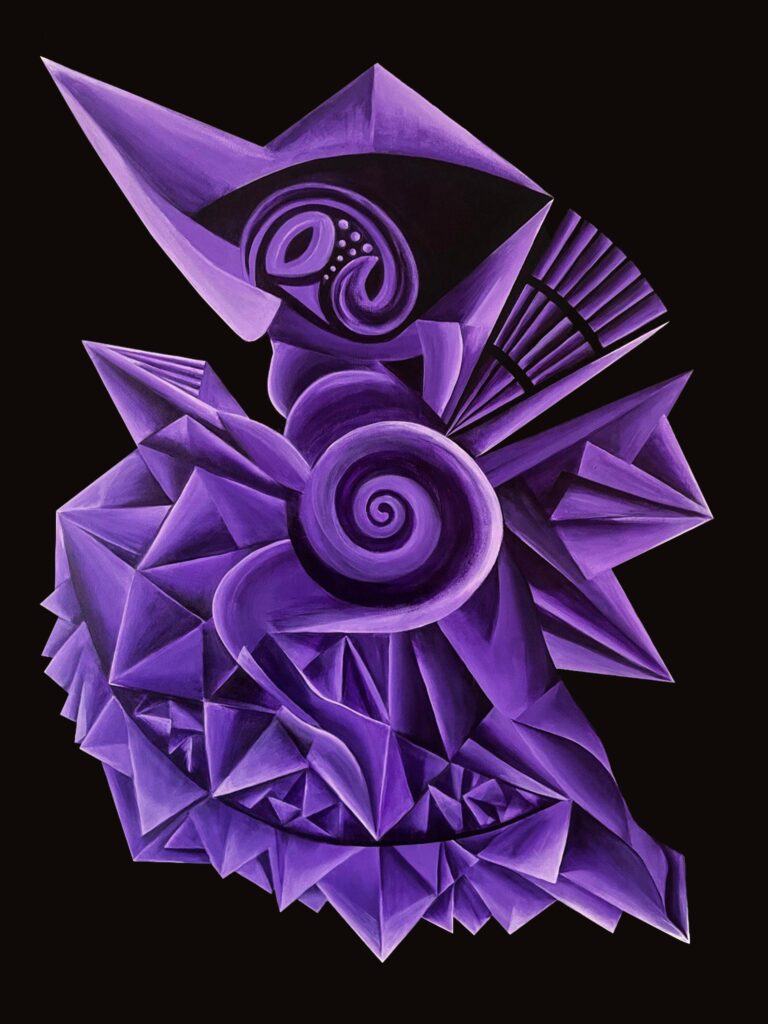
Amethyst
Border-Industrial Complex – 06
2023 | USA
Oil on Canvas
36 x 48 inches
Artist Statement
Time… time… time…
Time… my greatest treasure in this life and your greatest weapon against me. It has been a decade since my attempt to fly, to flourish, and your ruthless plan to degrade me. For the last ten years my soul has been the target of your hatred. Each year was a poisoned spear passing through my soul. But my patience and love are ancient. It can transform your spear as it etches my wounds, my purple pain, into a stunning amethyst. It reverses all your attempts to destroy me and my identity, then leads me to a place where I meet the truth about myself. I am Iranian and our long history has taught us resistance in the face of cruelty and hatred.
I am an Iranian woman. We are the weavers of the precious rugs from Toranj and Baharestan, among the oldest masterpieces of art on earth, thousands of years old. Oppressors come and go. Decades and centuries of shame or glory will pass. The greatest powers on earth all disappear. But it is us, again, women, the spinners of the spinning wheel. Unbreakable alchemists.
